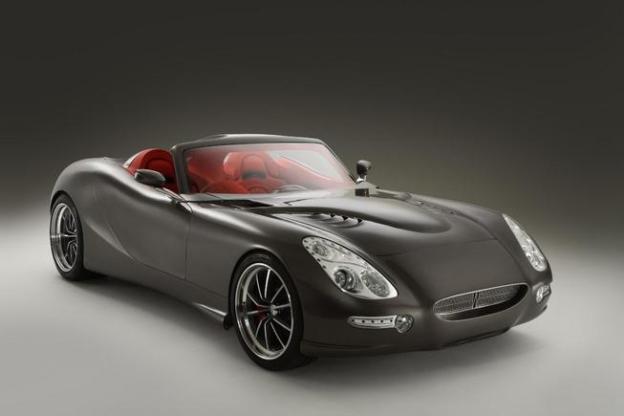 The words “sporty” and “diesel” usually don’t appear in the same sentence. Diesels are known for powering locomotives, trucks, and buses; all decidedly un-sporty vehicles. Unless said diesel is in one of Audi’s LeMans winning racers, petrolheads aren’t interested. That’s why the diesel-powered Trident Iceni Grand Tourer sports car is such a tough sell.
The words “sporty” and “diesel” usually don’t appear in the same sentence. Diesels are known for powering locomotives, trucks, and buses; all decidedly un-sporty vehicles. Unless said diesel is in one of Audi’s LeMans winning racers, petrolheads aren’t interested. That’s why the diesel-powered Trident Iceni Grand Tourer sports car is such a tough sell.
Named after a Roman-era English tribe and made by Britain’s Trident Performance Vehicles, the Iceni is a traditional two-seat roadster with a turbodiesel engine. Specifically, it’s a 6.6-liter V8 from General Motors that normally powers Chevy Silverado pickup trucks. A sports car with a truck engine? Talk about gumption.
It will be a powerful engine though, Base Iceni Grand Tourers will have 430 horsepower and a colossal 950 pound-feet of torque. Trident will also offer an upgraded model with 650 hp and 1,050 lb-ft. That means the Iceni won’t just be powerful, it’ll be able to push-start a planet.
The Iceni will be fast, too. Trident says it will do 0 to 60 mph in 3.7 seconds and come pretty close to 200 mph. That’s only 0.3 seconds slower than a Pagani Huayra.
Any true sports car needs to be fast, but the Iceni Gran Tourer distinguishes itself from the Italian, German, Japanese, and American competition by being frugal as well. Trident says the Iceni will return 58 mpg on the European cycle and could potentially travel 2,000 miles on a single tank. That is the power of diesel.
Like electric motors, diesel engines make most of their power at low speeds. At 70 mph, the Iceni’s engine is only turning at 980 rpm, which is lower than the idle speeds of some gasoline-powered cars. Since the engine isn’t working as hard, it’s using less fuel.
This amazing economy is why small, diesel-powered cars are the standard in Europe, and why American hyper milers love their Volkswagen Jetta TDIs. However, diesel does have a few downsides.
Making prodigious low-end torque means most diesels don’t make much horsepower; they can accelerate quickly but their top speeds are limited. That’s why nearly every diesel comes with a turbocharger: carmakers need to give the engines more range. If the Iceni can really achieve a near-200 mph top speed, Trident will have solved that problem.
Another problem is reliability. It is very difficult to find a transmission that can cope with over 900 lb-ft of torque without disintegrating. We’ll see how well Trident did on that front when the first Iceni Gran Tourers hit the road.
Don’t expect to see too many sports cars spewing clouds of diesel exhaust any time soon, though. The Iceni Gran Tourer is built to order, and carries a price tag of roughly $119,000. A Mercedes-Benz SLS AMG Roadster costs nearly $100,000 more, and is 0.2 second quicker to 60 mph, but it does not get 58 mpg.
Trident’s diesel locomotive is scheduled for a public debut at at the Salon Privé in London on September 5. With the Iceni Gran Tourer, Trident has gone after two nearly impossible goals: making a green high-performance car and making diesel cool.



